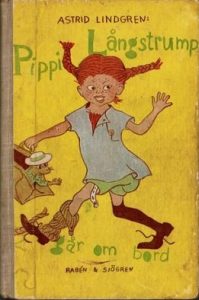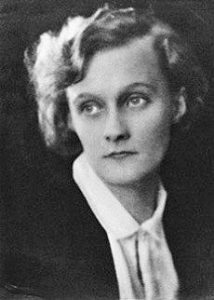The Who, What, Where, When, Why and How of the (First) French Revolution
Several years ago a friend of mine was headed to Paris and asked for a recommendation of a book that would give her a clear account of the French Revolution.* Somewhat abashedly, I suggested my own book on the history of socialism which I believe gives a clear account of the various iterations of the French Revolution from 1798 through 1871.** (Luckily, she agreed.) If she asked me today, I'd probably recommend Ian Davidson's The French Revolution: From Enlightenment to Tyranny as an introduction to the first French Revolution.
 The French Revolution is a journalist's account of one of the most complicated and confusing events of the long eighteenth century.*** Davidson uses the skills he developed as a foreign affairs correspondent for Financial Times to create an even-handed step-by-step account of the events from August 2, 1788, when Louis XVI called a meeting of the États Généraux in the hopes of getting financial help through the execution of Maximilien Robespierre on July 28, 1794. He assumes his reader is familiar with the catchwords and names associated with the French Revolution, but not with the details of its development. He begins with a careful description of the economic and social conditions in France in the years before the war. He identifies possible points of confusion for a modern reader: the Parlement for example was a law court, not a parliament. He gives brief biographies of each of the players, bringing even the most familiar names into clearer focus. Most importantly, he makes it clear that the Revolution began as a peaceful attempt at peaceful social change, with leaders who were dedicated to the rule of law, and that it remained largely peaceful for three years.
The French Revolution is a journalist's account of one of the most complicated and confusing events of the long eighteenth century.*** Davidson uses the skills he developed as a foreign affairs correspondent for Financial Times to create an even-handed step-by-step account of the events from August 2, 1788, when Louis XVI called a meeting of the États Généraux in the hopes of getting financial help through the execution of Maximilien Robespierre on July 28, 1794. He assumes his reader is familiar with the catchwords and names associated with the French Revolution, but not with the details of its development. He begins with a careful description of the economic and social conditions in France in the years before the war. He identifies possible points of confusion for a modern reader: the Parlement for example was a law court, not a parliament. He gives brief biographies of each of the players, bringing even the most familiar names into clearer focus. Most importantly, he makes it clear that the Revolution began as a peaceful attempt at peaceful social change, with leaders who were dedicated to the rule of law, and that it remained largely peaceful for three years.
Davidson's The French Revolution is not a scholar's account of the French Revolution, and makes no claim to be. it is instead a serious work of popular history, challenging enough to intrigue those already familiar with the revolution and accessible enough to engage those who are not.
*My Inner Reference Librarian is always happy to help.
**Yes. There was more than one French Revolution. This was the source of great confusion to me my first year in college.
***That's intended as a compliment. The best journalists are able to bring clarity to complicated issues.
The heart of this review appeared previously in Shelf Awareness for Readers.
Pippi Longstocking Goes to War
(Okay, I admit it. That's an inaccurate, click-bait of a title.)
- Astrid Lindgren, 1924
Today Astrid Lindgren is famous as the creator of Pippi Longstocking: the red-headed quirky rebel who proclaimed herself the strongest girl in the world.* In World War II, Lindgren was a 30-something housewife and aspiring author. Her war diaries, published posthumously in Sweden and recently translated into English, are a fascinating account of life in neutral Sweden during World War II.
If you read War Diaries, 1939-1945 hoping to get insight into the creative process behind Pippi Longstocking, which was published just before the end of the war. you will be disappointed. There are few references to her writing. If you want a wartime narrative written by an intelligent observer that offers a different perspective than the British accounts most familiar to American readers, Lindgren's your girl.
The diaries are a mixture of the personal and political. Marital problems, concerns about her son's difficulties at school and rumors about increased rationing are intermixed with her determination to document the course of the war. She lists the menus for birthday dinners and holiday celebrations, commenting each time on how lucky Sweden is to have abundant food and fearing that each feast will be the last. She pastes in newspaper clippings of critical events.
She also adds privileged information that adds depth to her reporting. Lindgren worked on the night shift for a government security agency responsible for censoring correspondence sent from or to other countries. Although her work was so hush-hush that her children did not know what she did, she had no hesitation about copying and commenting on sections of the letters in her diaries, including letters describing the transportation of Jews to concentration camps in Poland as early as 1941.
Lindgren's War Diaries tell the story of the war as seen through the veil of Swedish neutrality—a veil that Lindgren recognized was perilously thin. She records her relief and guilt over Sweden's relative prosperity, her shame over allowing German troops to travel through Sweden, and her fear that Russia will prove to be a greater threat to Sweden than Germany. For those of you who are serious World War II buffs, it may all be alte wurst. For me, it was a new approach to a familiar topic.**
*One of a long string of red-haired literary rebels and misfits who inspired and comforted a certain red-haired future history buff.
**I'm beginning to see a theme here. Sometimes I think I know nothing at all about history.
Much of this review appeared previously in Shelf Awareness for Readers
Mercy Street, Round 2
 Back in November I promised you that I wouldn't clutter History in the Margins with little bits of news and speaking gigs. And I intend to keep that promise.
Back in November I promised you that I wouldn't clutter History in the Margins with little bits of news and speaking gigs. And I intend to keep that promise.
But I want to give the Marginalia a heads up that the PBS series Mercy Street will air a second season starting on January 22. Which means I will be starting another round of speaking and promotion related to the book.
The first gig will be on January 18: an interview on Civil War Talk Radio. Gerry Prokopowicz of East Carolina University hosts a weekly hour long interview with authors, historians, museum curators and the like about the Civil War. I'll be in good company. Think Doris Kearns Goodwin, Jeff Shaara, Ken Burns.* The show is internet-based. Programs are archived so you can listen to me, or Ken Burns,** at your leisure.
On February 2, I'm scheduled to speak at the Pritzker Military Library here in Chicago. If you're in the Chicago area, I'd love to see you there. If not, the talk will livestream. The woman who runs the program tells me I don't have to perfect, I just have to be awesome. No pressure there.
If you want to know what I'll be doing when going forward, the schedule will be on the newsletter.** It's also on the events page on this blog.
It's going to be Big Fun!
*Be still my nerdy fangirl heart.
**Episode 104. October 15, 2004.
***Feel free to sign up if you haven't already. (Click here)






